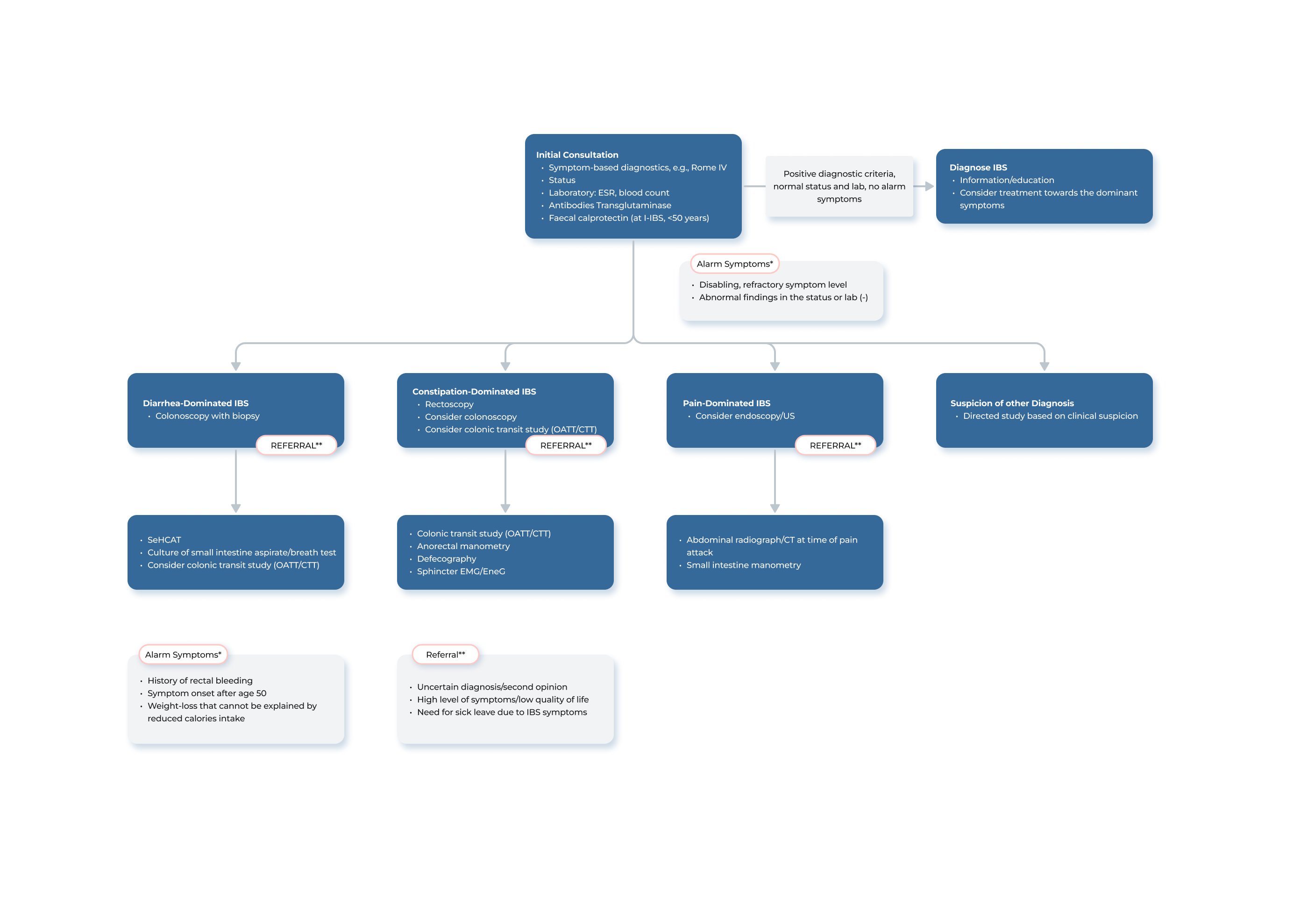Chronic Constipation: Why Assess Colonic Transit Time (CTT) with the Transit-Pellet Single X-ray Method?
About 80% of the constipated patients undergoing CTT measurement are women, about 20% men. In general, most patients considered for CTT have already tried some therapies like food changes, bulking agents, or osmotic laxatives but with insufficient effect.
Assessment of colonic transit is indicated to see if the patient has a transit abnormality or not. If abnormal, the test should disclose the type of transit disturbance.
Points to be considered:
- Select a single X-ray method that can distinguish between normal and delayed CTT in both men and women. This limit, defined as percentile 95 in healthy subjects, is around 2.5 days (55-60 hours) in men but around 3.9-4.0 days (approx. 95 hours) in women. The Transit-Pellet principle, introduced in 1986, with repeated, regular marker doses is the only single X-ray method to meet this requirement: Numerical CTT values are obtained over the full transit range from rapid to slow. In addition, the method yields segmental transit value, thus giving a complete colonic transit profile.
- After the CTT measurement, at follow up, discuss the results with the patient and show the transit profile diagram obtained. Discuss the transit profile in relation to the patient’s symptoms.
- A normal transit value is seen in most patients with IBS and constipation, IBS-C,1 and is important to discuss with the patient. Show the normal CTT and the normal transit profile the patient has along the colon, despite his/her feeling of severe constipation. This will help the patient understand that abnormal sensitivity is a cause and help eliminate the patient’s fear of having a dangerous disease. This is a key point in patient education for IBS-C2 and helps reducing symptoms. Note that this assessment requires a method that can measure gender specific normal values. For example, a transit time in the order of 3.0 – 3.6 days is a delay in male patients but completely normal for female patients.
- In patients having a delayed recto-sigmoid transit time, consider the possibility of an outlet obstruction disorder. For further exploration of such disorders special investigation may be needed such as balloon expulsion test, ano-rectal manometry, etc.
- A considerable part of the patients with constipation and slow transit have delay in left colon. If the patient has already tried the usual measures (see above), the transit value and transit profile obtained may motivate attempts with recently developed laxatives.
- Some patients with therapy refractory constipation have a delay also in the right colon with a cecum-ascendens transit time in the order of two days or more, thus, severe colonic inertia. In this group, usually refractory also to the newer laxatives, unconventional drugs may be tried before surgery is considered.
- Colonic surgery, e.g., colectomy with ileo-rectal anastomosis, to treat drug refractory constipation, is a rare operation today, but still performed in very selected cases by some specialized colorectal surgeons. In general, this procedure is only considered in patients with a long transit time also in the right colon (see point 6).
Hasse Abrahamsson MD; Emeritus Professor of Gastroenterology, 2022.
Sahlgrenska Academy, University of Gothenburg.
- Törnblom H, et al. Colonic transit time and IBS symptoms: what’s the link? Am J Gastroenterol. 2012;107:754-60
- Ringström G, et al. Structured patient education is superior to written information in the management of patients with irritable bowel syndrome: a randomized controlled study. Eur J Gastroenterol Hepatol. 2010;22:420-8.




